Sukhoi Su-57 “Felon”: Russia’s Stealth Fighter?
April 15th, 2023
7 minute read
A joke could likely be made that the stealth capabilities of Russia’s Sukhoi Su-57 are so good that it is impossible to see it over the skies of Ukraine. The Kremlin has claimed on multiple occasions that the aircraft has been employed in a number of sorties, a fact that Kyiv disputes — while numerous experts have suggested that the fighter’s role in the ongoing conflict has likely been limited.
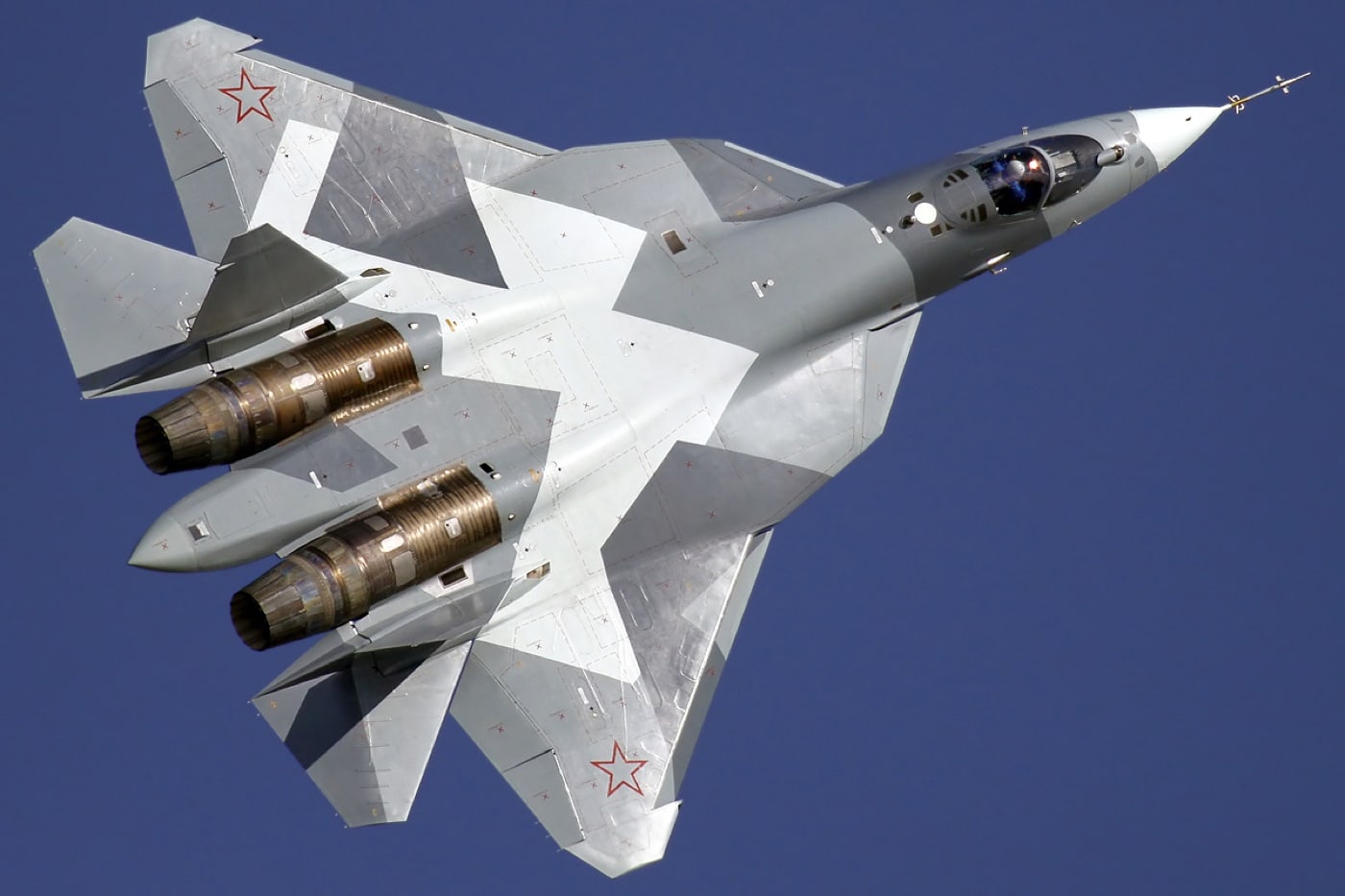
Regardless, the Su-57 is the first Russian-built aircraft designed with stealth technology, while it was also developed to serve as the basis for a family of stealth-based aerial combat systems that could include drones. As with many other Russian military platforms, the development of the Su-57 (NATO reporting name “Felon”) actually began during the Soviet era.
The Soviet Future?
Beginning in the late 1970s, Moscow began to consider the capabilities of a multirole combat aircraft that would eventually replace the MiG-29 and Su-27. The efforts, which consisted of two programs, progressed through the 1980s but were then left to whither following the dissolution of the Soviet Union at the end of 1991. Those programs were canceled in the 1990s due to funding issues — but it was in 1999 that the Russian Ministry of Defense began work on a new “next-generation” fighter initially as the PAK FA program
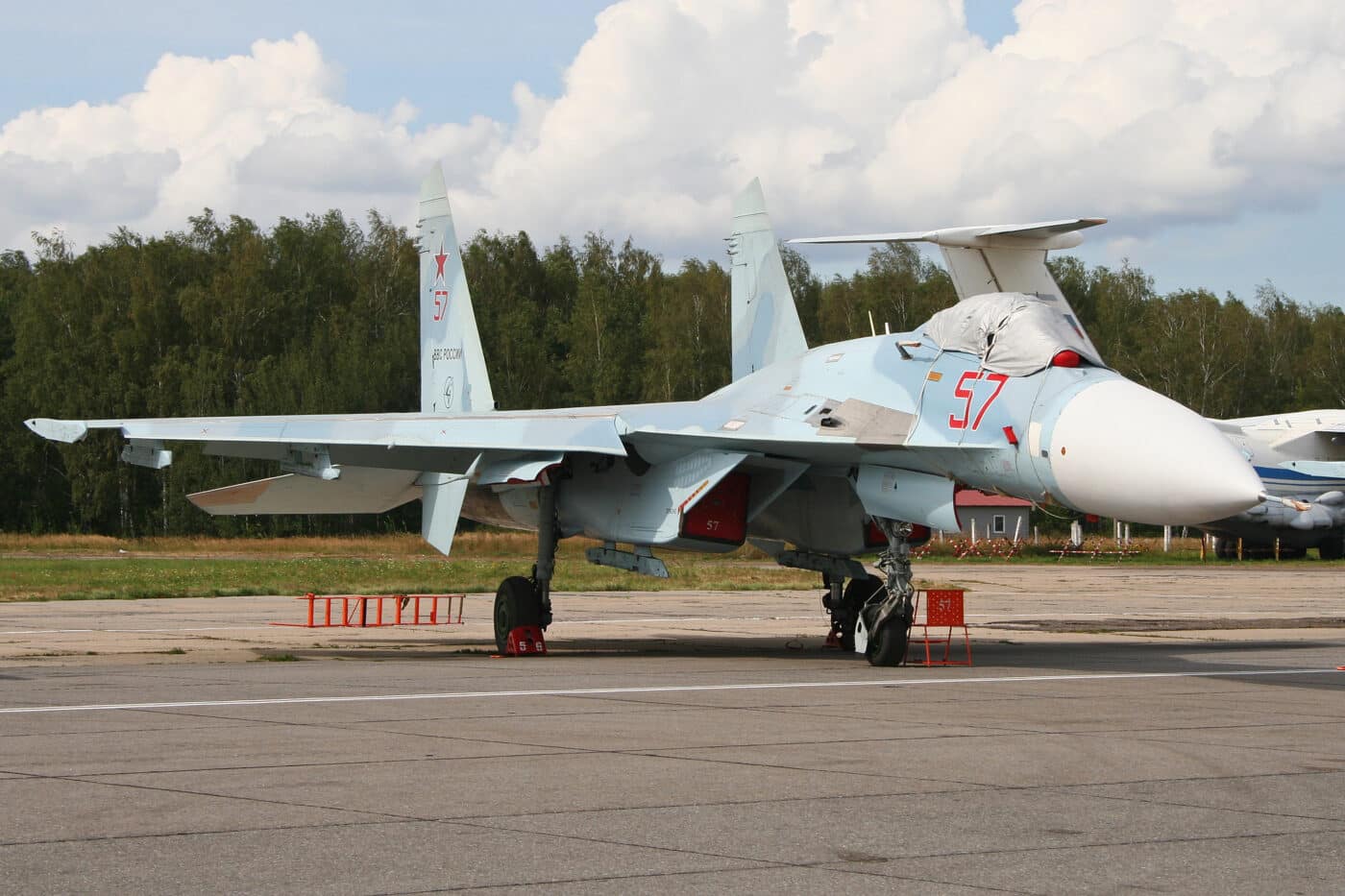
This led to the Su-57, which was seen as a significant leap forward in Russian aircraft design.
The “fifth-generation” stealth, multirole fighter was developed to combine the functions of an attack plane with a fighter jet, and to be able to engage and destroy various land, airborne and maritime targets. It was noted for its use of composite materials and an aerodynamic configuration that includes a pair of internal weapons bays, which help provide a low level of radar and infrared signature, while the Su-57 is also capable of developing supersonic cruising speed.
Each bay can carry up to four K-77M beyond visual range radar-guided missions, while it can also carry a pair of K-74M2 short-range infrared-guided missiles in underwing fairings — but at the expense of its stealth.
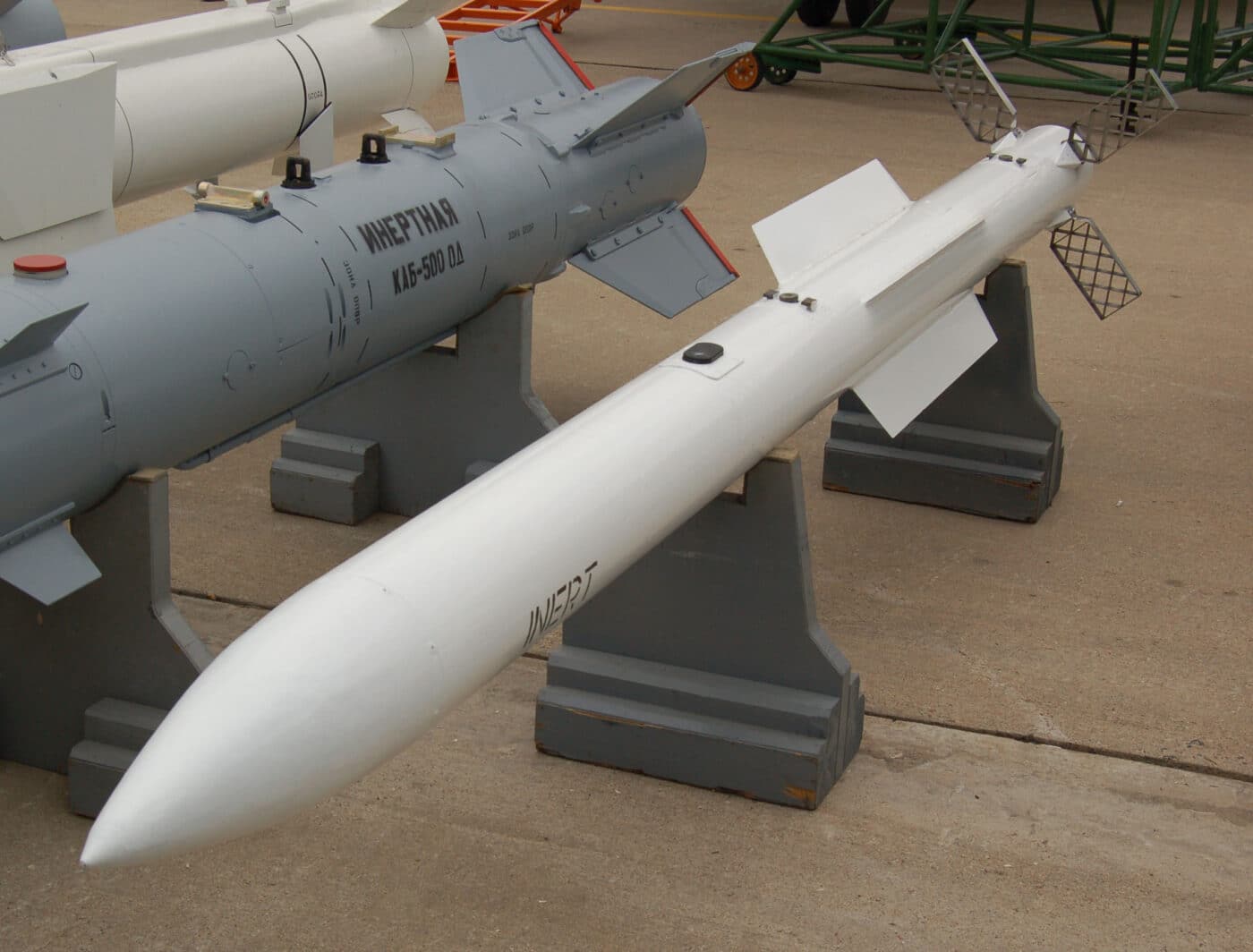
The advanced fighter is reported to be equipped with an advanced onboard computer that can act as “second pilot,” assisting the human operator during combat sorties.
In 2020, the Sukhoi company, a subsidiary of the state-owned United Air Corporation (UAC), signed a contract with the Russian Ministry of Defense to deliver 76 Su-57 fighter jets. Serial production was set to begin at UAC’s Komsomolsk-on-Amur Aircraft Plant.
Moscow has continued to tout the capabilities of the Su-57, and some of it arguably borders on hyperbole rather than fact. It was in October 2021 that Russian military expert Alexei Leonkov told state media outlet Tass that the fighter was even more capable than the United States Air Force’s F-22 Raptor and F-35 Lightning II — each of which is produced by aerospace giant Lockheed Martin.
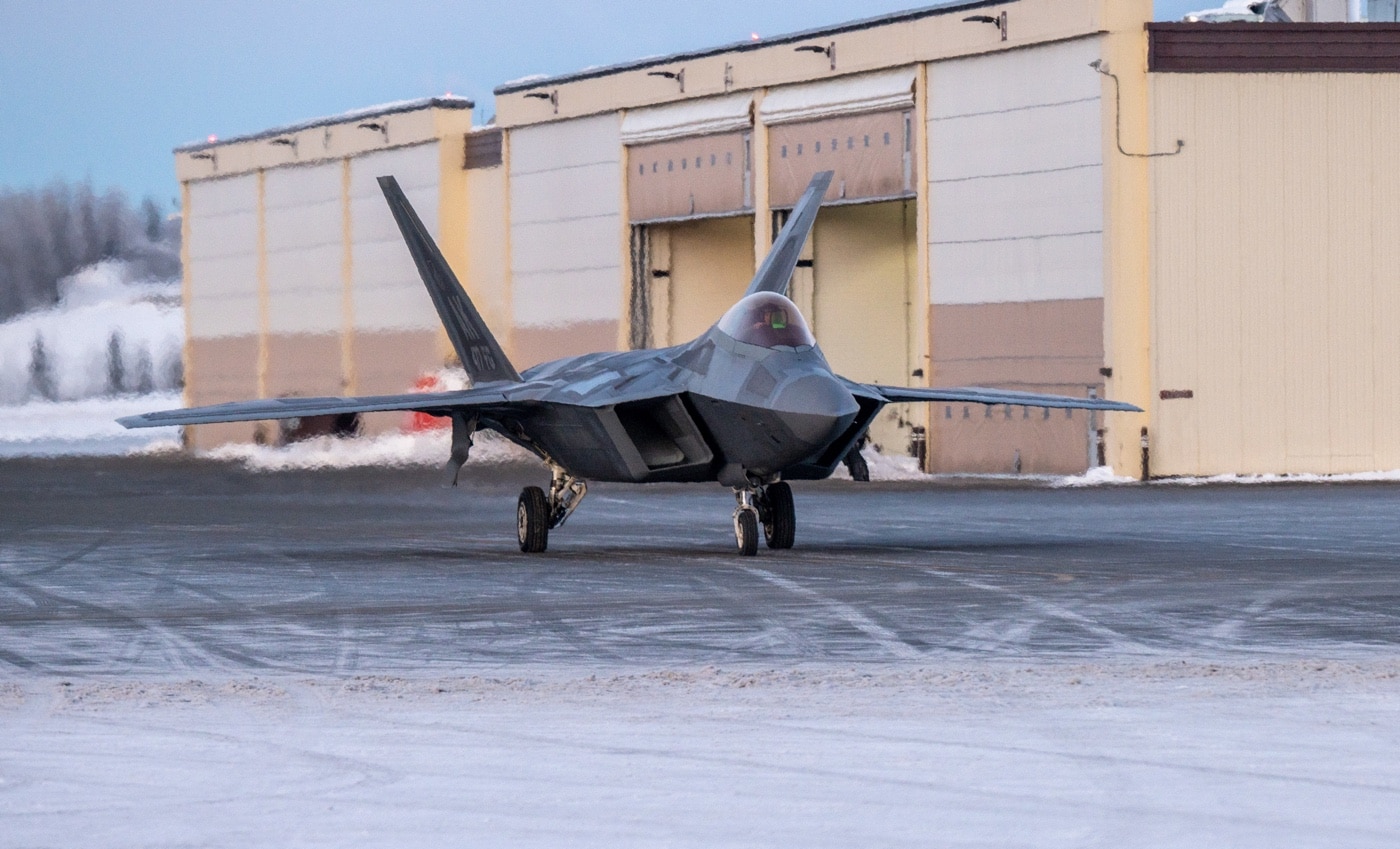
“The Su-57 outshines them by now in terms of the amount and diversity of armament,” Leonkov was quoted as saying. “On top of that, the latest solutions, such as the second pilot as a system that facilitates aircraft control and combat operations, a spherical all-around radar that ‘sees’ everything, and cutting-edge electronic warfare systems aboard the Su-57 leave the U.S. rival far behind.”
No Show in Ukraine?
The Russian Aerospace Force has been the primary operator of the fighter, and it was reportedly tested in combat conditions in Syria in 2018 — yet hasn’t been widely employed over the skies of Ukraine.
To date, there have only been a handful of reported cases where the Su-57 was utilized in combat operations in the ongoing conflict.
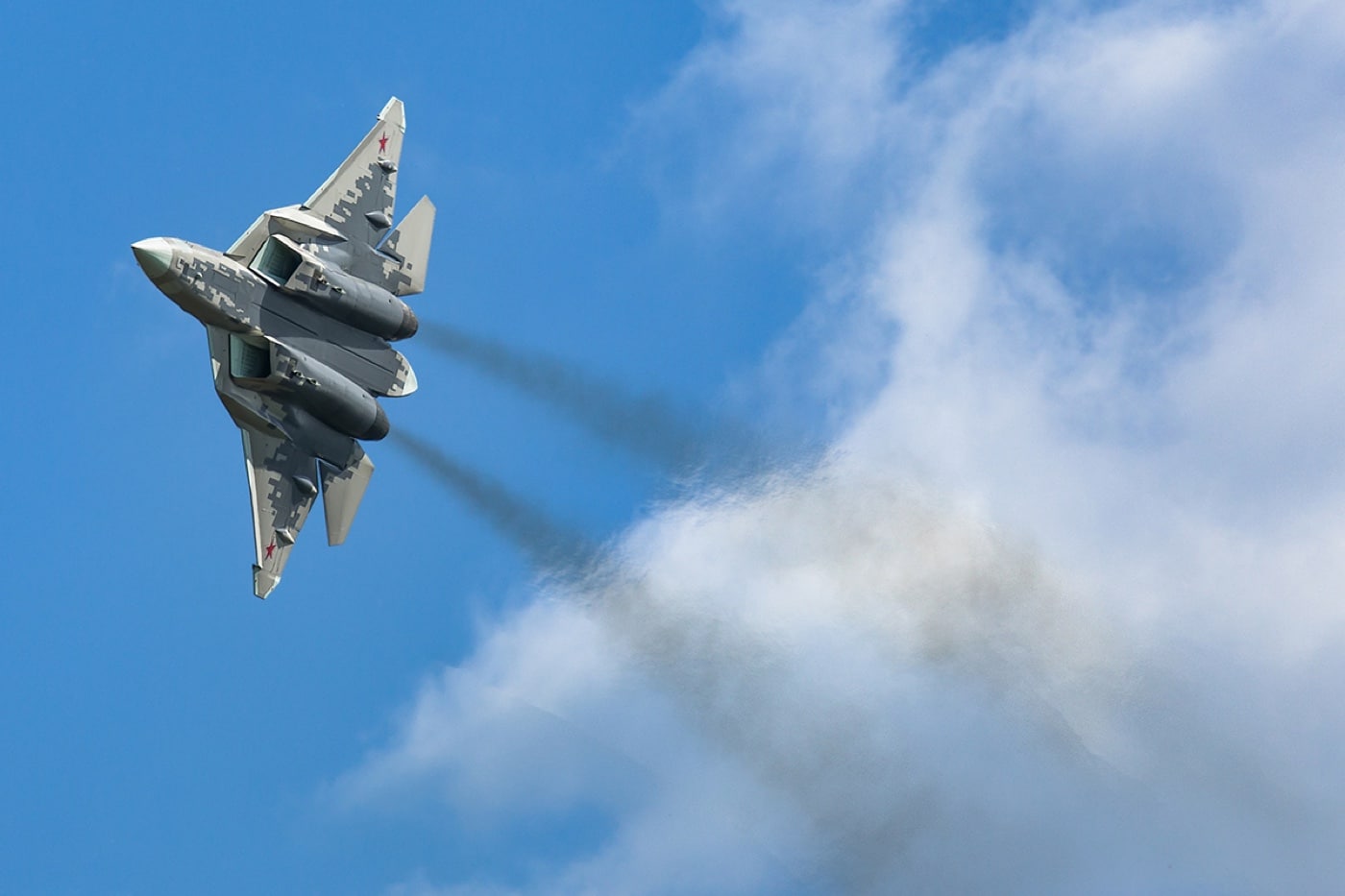
“The absence of the Su-57 in the war in Ukraine is most likely down to the very limited fleet size,” explained Harry Boneham, aerospace analyst at international analytics firm GlobalData.
One factor could be that despite the hype surrounding the aircraft, and repeated claims from the Kremlin that the fighter would enter “serial production,” fewer than 20 are believed to have been produced.
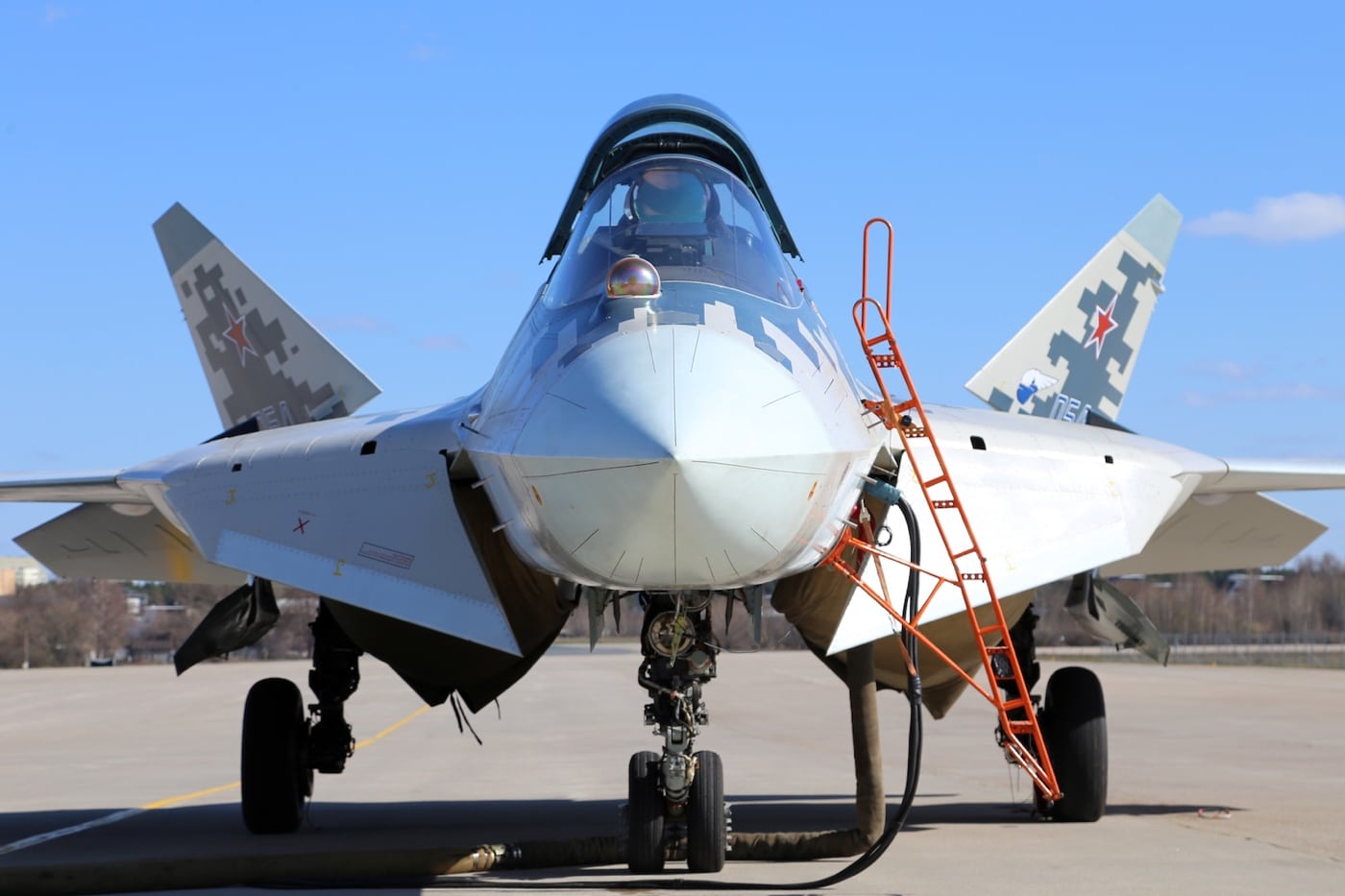
“Western officials have said that Russia only possesses 10 aircraft, and only has the capacity to field one at a time, in its own uncontested airspace,” Boneham noted. “In such small numbers, it is unlikely that the Su-57 would have any appreciable impact on the air environment in Ukraine. Whilst the platform has been used in the war, it has only been deployed in long-range standoff missile launches whilst still in Russian airspace.”
It has been further speculated that Russia may not have confidence in the capabilities of the platform, but there could be other factors at play, especially as some media sources have reported that the Su-57 has conducted successful strikes into Ukraine. The bigger issue may be that Moscow simply doesn’t want to risk any of its advanced — and terribly expensive — fighters.
“The Russians are confident in the aircraft, but I agree that a combat loss would definitely be a setback, especially for their export aspirations. Now that the U.S. is training Ukrainian troops on the Patriot systems at Ft. Sill, the Russians may not risk it anymore,” suggested Brad Curran, aerospace & defense principal consultant at aviation research firm Frost & Sullivan.
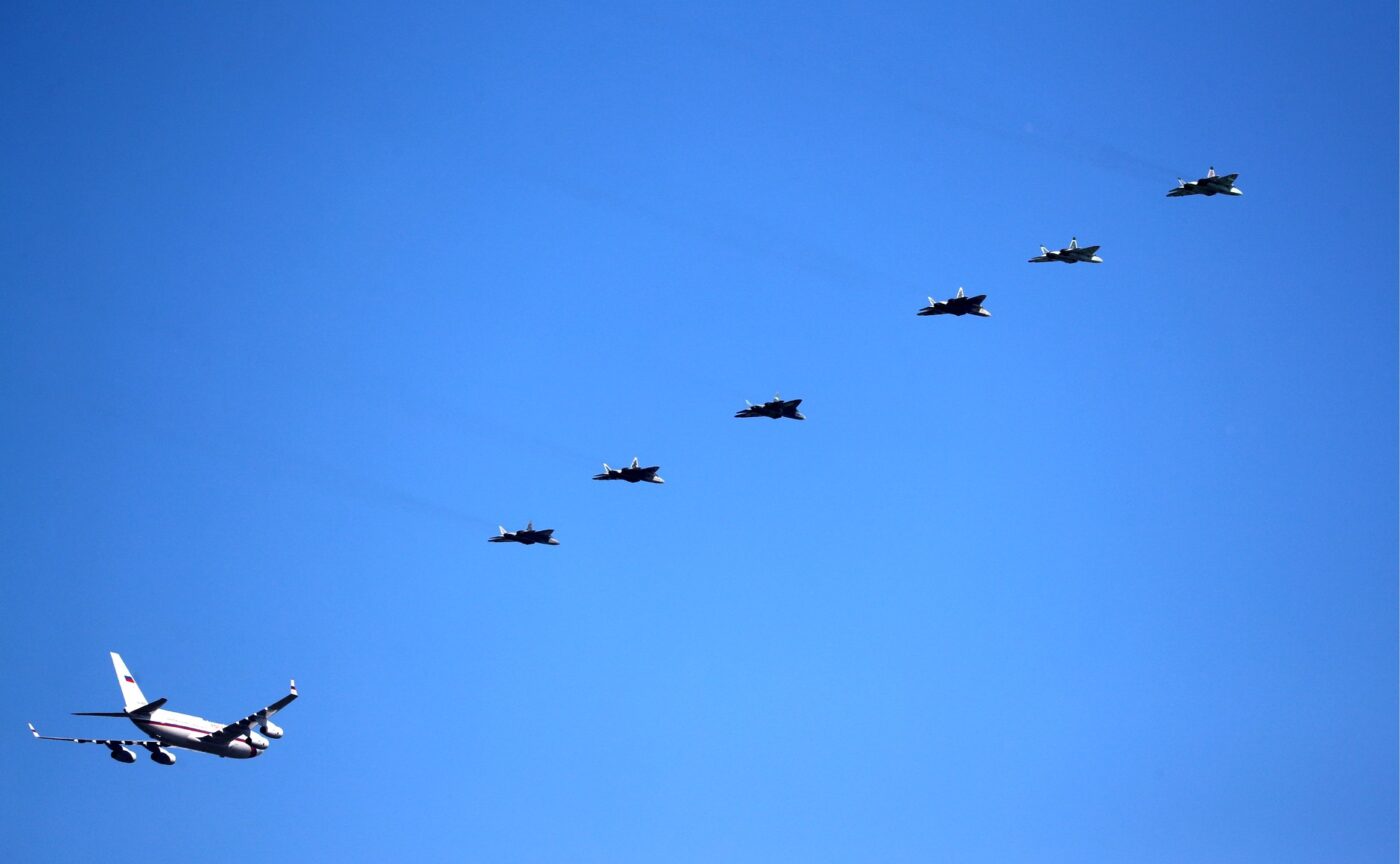
It would certainly not be good for the Kremlin were the Su-57 to be shot down, which would be another propaganda coup for Kyiv.
“The loss of an aircraft would however be a rhetorical win for the Ukrainians, could impact future export prospects, and would risk the exposure of sensitive technology,” Boneham added. “Thus, the absence of the Su-57 is not due to a lack of confidence in the aircraft on the part of the Kremlin, but is instead due to low fleet numbers and a general risk-averse attitude.”
A Numbers Game
According to statements made by UAC and the Kremlin, the Russian Aerospace Force will reportedly receive 22 Su-57 fighters by the end of next year, while that number is set to increase to 76 by 2028. It is worth noting that those goals were set before Moscow launched its unprovoked invasion of Ukraine a year ago.
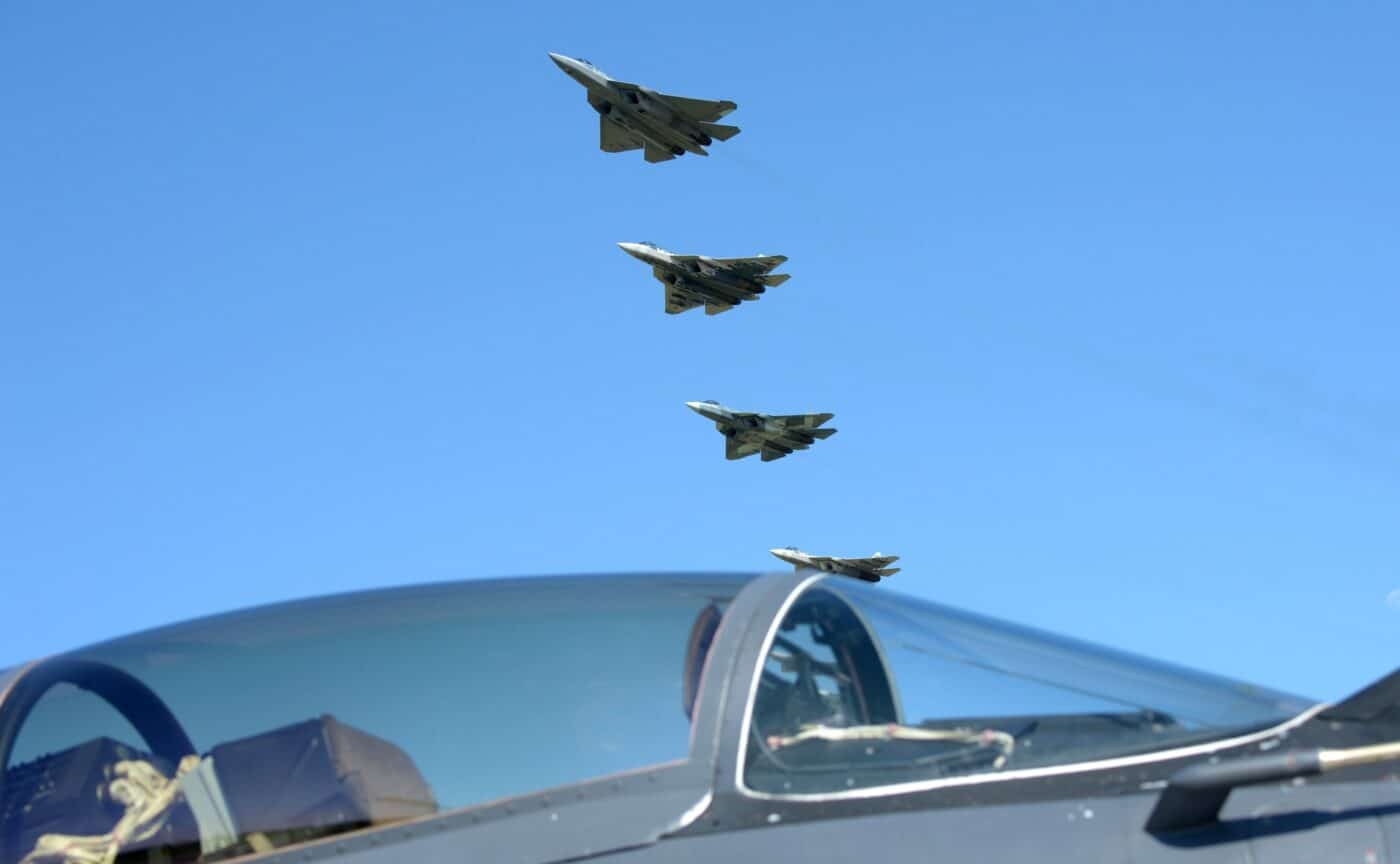
In addition to the issue of cost for the advanced aircraft, it remains unclear if Russia has the manufacturing capacity to actually produce the fighters.
“Whilst the geopolitical incentives for a large acquisition of the Su-57 continue to persist, the capacity of the Russian defense industry to mass produce technologically advanced platforms is questionable, especially following the imposition of Ukraine-related sanctions,” said Boneham.
There is also the issue that Russia can’t actually afford not to move forward with the Su-57. Though the Kremlin hasn’t lost that many aircraft in Ukraine — at least when put in perspective with the number of military personnel and tanks — Russia continues to operate a fleet of aircraft dating back to the Cold War.
“Like the U.S., their air fleet is very old and needs replacements,” explained Curran. “That would account for large production, I would not be optimistic on very many exports though.”
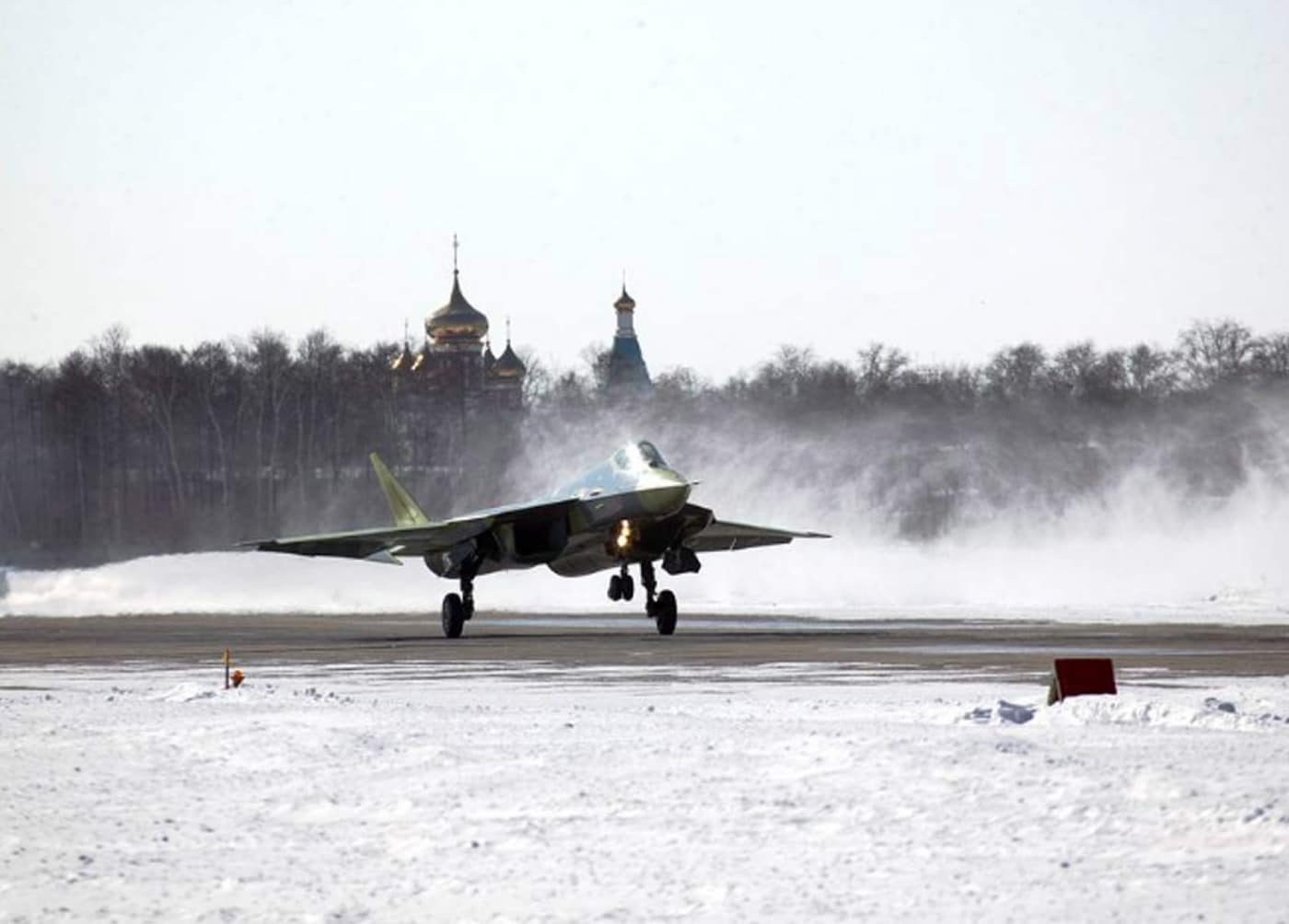
This is actually where the Sukhoi Su-75 “Checkmate” could come into play. The light tactical aircraft, which was officially unveiled at the 2021 MAKS air show outside of Moscow, was developed based on technology employed in the Su-57 for the export market. Aviation experts have suggested this was meant to help fund the developmental costs of the Su-57.
However, to date, only static displays have been presented at air shows and the Su-75 won’t likely take its first flight until at least some time in 2024 at the earliest. It further suggests that Russia is trying to leverage the Su-75 as much as possible, but the result could simply be a bargain-bin fifth-generation fighter instead of a truly capable warbird.
The fact that the Su-57 isn’t being used in combat likely isn’t going to help sales of any export models, or the Su-75 for that matter. Given that Russia has been cautious about deploying the jet, and there is little reason to suggest that the United States would ever supply Kyiv with F-22 or F-35 fighters, we probably won’t get a chance to see which is truly the best over the skies of Ukraine.
Editor’s Note: Please be sure to check out The Armory Life Forum, where you can comment about our daily articles, as well as just talk guns and gear. Click the “Go To Forum Thread” link below to jump in and discuss this article and much more!
Join the Discussion
Continue Reading
Did you enjoy this article?

 60
60






